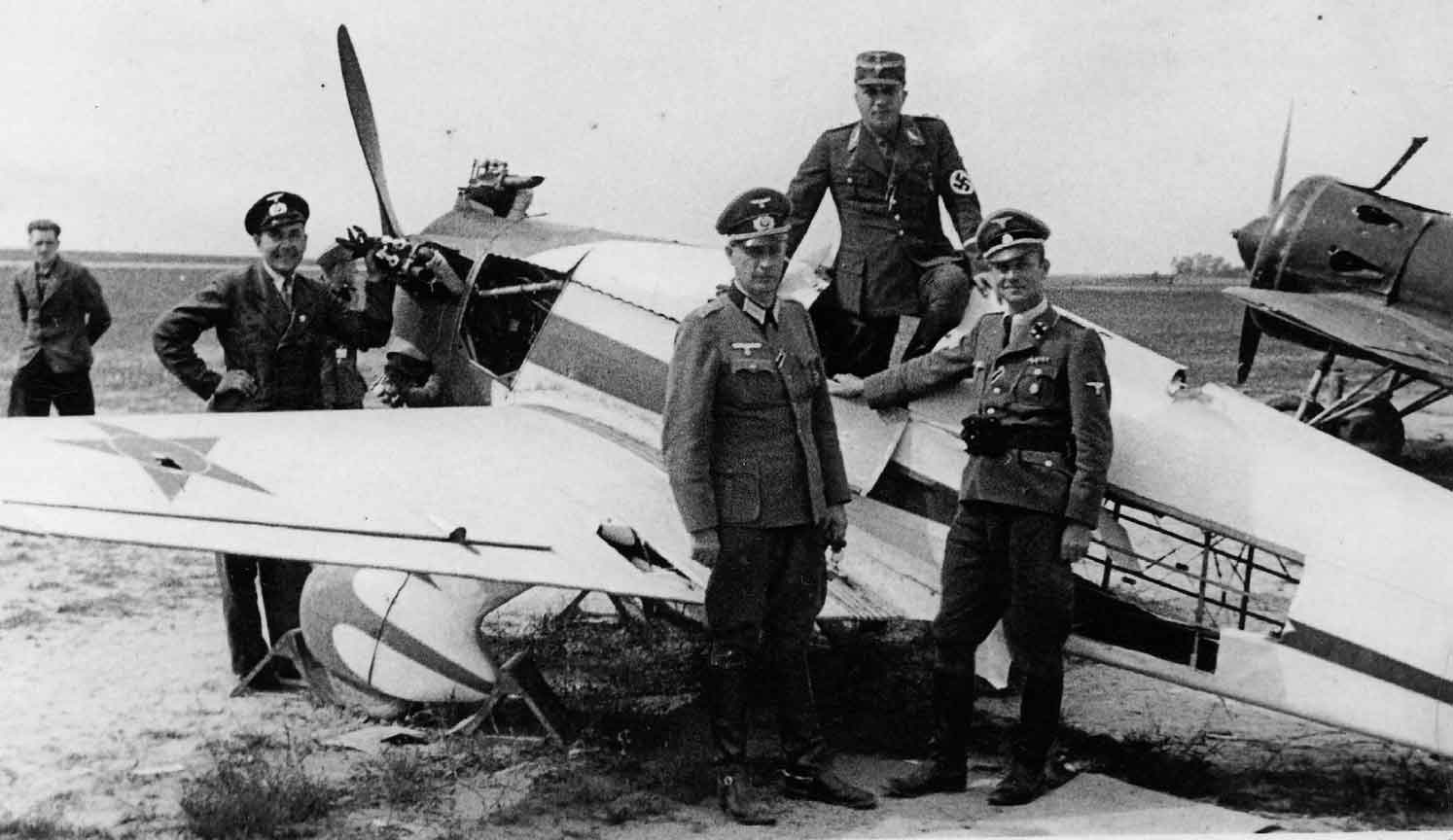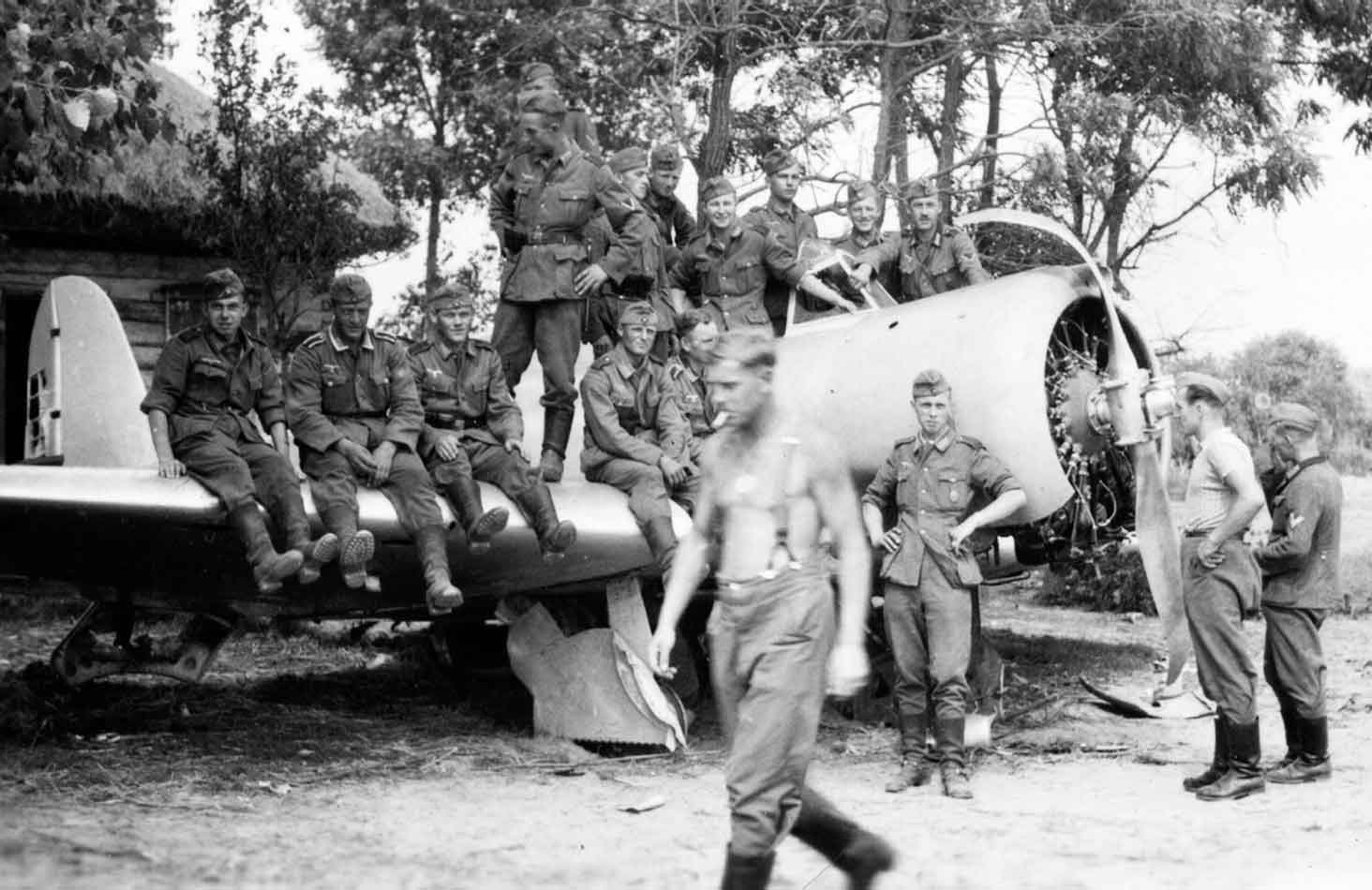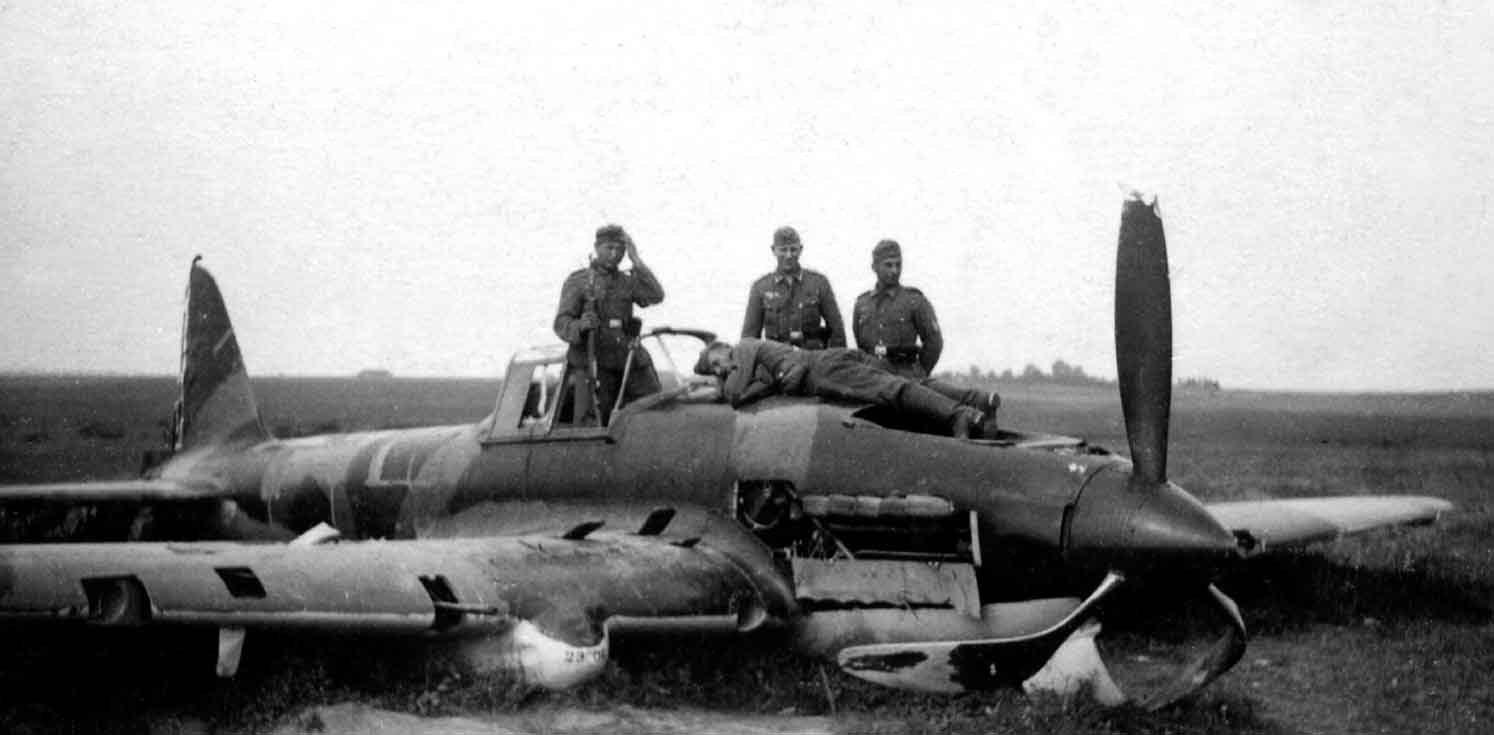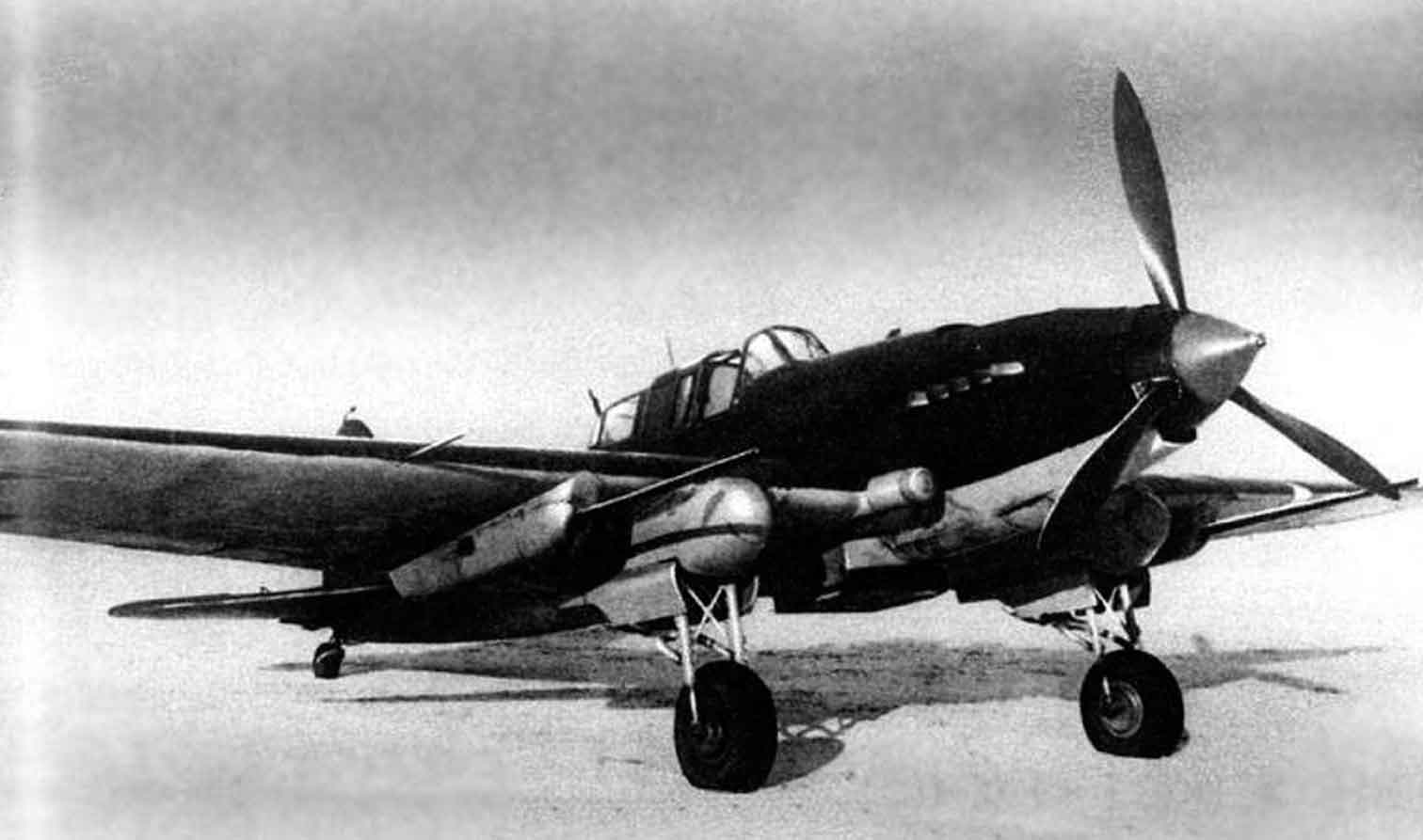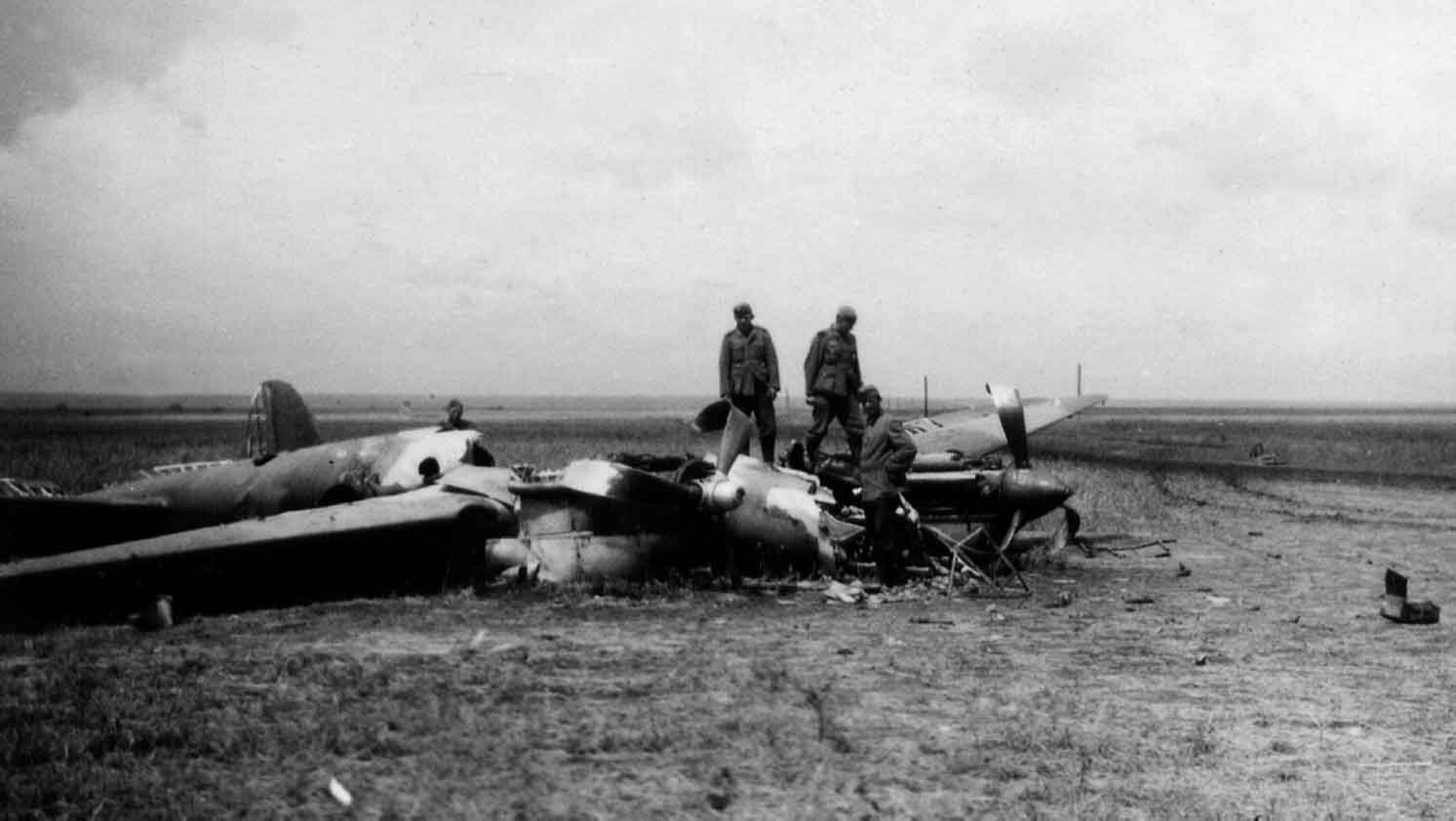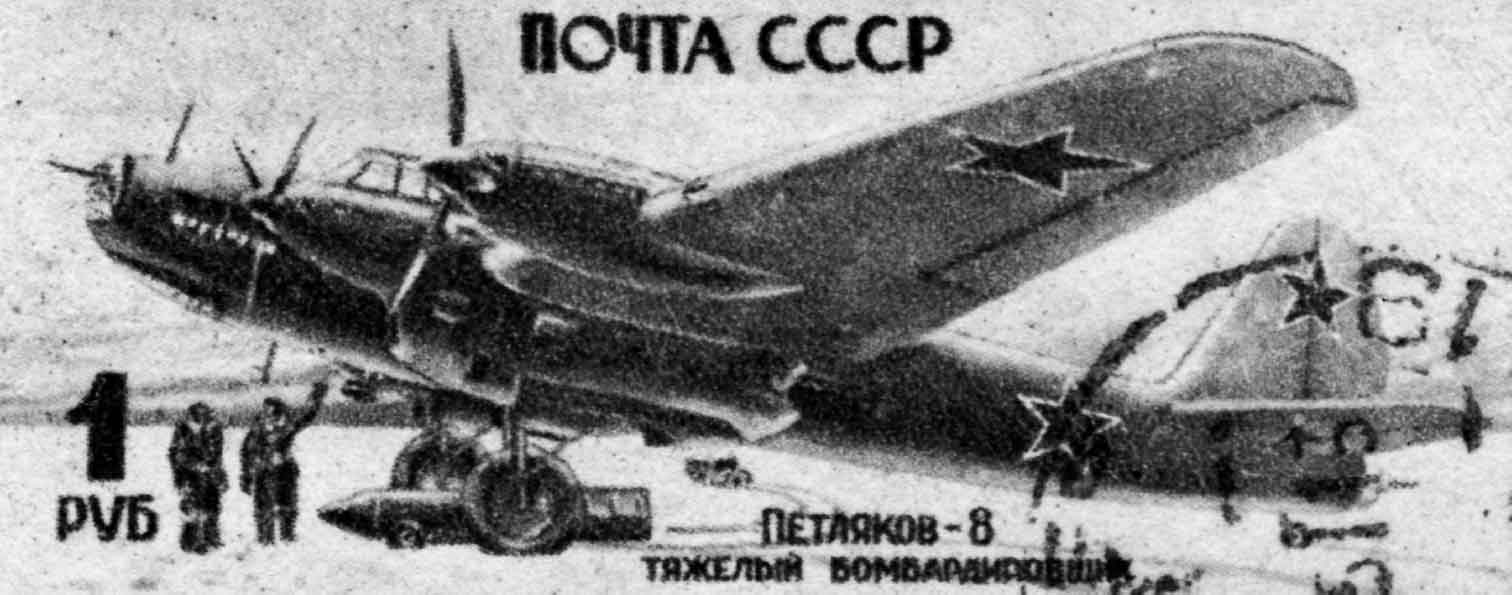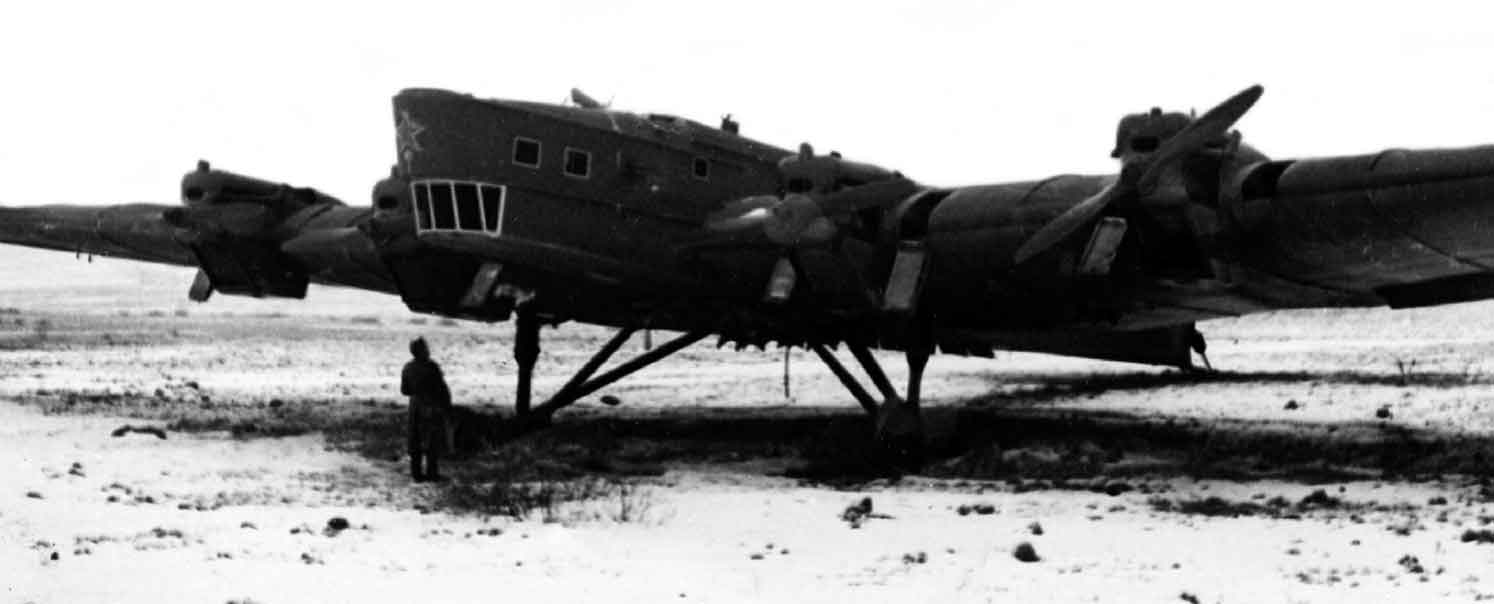The Falcon’s Shturmoviks
The Red Air Force was equipped with a number of rickety biplanes that looked like relics from the First World War, which acted as Shturmoviks, or groundattack aircraft. Key amongst these was the robust Polikarpov two-seat U-2 trainer (renamed the Po-2 in 1944). It was nicknamed Kukuruznik (crop duster) and despite its rather ancient appearance proved highly successful in both civilian and military service. Designed by Nikolai Polikarpov, it was intended as a replacement for the earlier U-1 Avrushka trainer aircraft.
The U-2 was used widely on the Eastern Front in a variety of roles including ground attack, night bomber, air ambulance, supply plane and staff liaison. It was first used as a bomber in 1941, and was deployed as a light bomber and for reconnaissance during the defence of Odessa. Although its slow speed meant much faster enemy fighters found it hard to shoot at, it was vulnerable to anti-aircraft fire. Therefore the following year it was redeployed as a light, night ground-attack aircraft. In the darkness the sound of the engine reminded German troops of a sewing machine and they dubbed it the Nähmaschine. Its main claim to fame was with the Night Witches – an all-women night bomber regiment. The fact that about 20,000 U-2s were built by the end of the war is testament to the aircraft’s utility.
Two other biplanes in service were the two-seat R-5 and R-Z, which were also reconnaissance and light bomber aircraft. The former went into production in 1930 and 5,000 were built for the Red Air Force. The R-5 was flown by the Spanish Republican Air Force during the Spanish Civil War. It was deployed by the Soviets and the Mongolian People’s Air Force against the Japanese during the Battle of Khalkhin Gol in 1939; it then supported the Soviet invasion of Poland and saw action against the Finns in the Winter War. The R-5Sh was a ground-attack variant armed with four wing-mounted machine guns. Various versions of the R-5 were employed by the Soviets until 1944.
The R-Z, introduced in 1935, was a development of the improved R-5SSS and included a sliding canopy for the crew. The production run was short-lived and by the time it came to a close in the spring of 1937, only just over a thousand R-Zs had been built. Like the R-5 it also saw combat with the Spanish Republican Air Force and against the Japanese and the Finns. By the time of the German invasion it was being phased out by the Il-2, but still remained with a few light bomber regiments. Limited numbers of the Yakolev UT-1 monoplane single-seat trainer were used for reconnaissance work and ground attack in the opening stages of the war. Ground-attack conversions known as the UT-1B saw action over Sevastopol and the Caucasus in 1942.
Pavel Sukhoi’s initial contribution to the Red Air Force was the ill-fated singleengine Su-2 short-range light bomber, which bears a passing resemblance to Japanese dive-bombers. It was to prove nowhere near as effective. In the mid-1930s, Stalin had issued a requirement for a multipurpose combat aircraft that could both scout and attack targets at the same time. Sukhoi, who was with the Tupolev aviation design bureau, worked on this project, which was dubbed ‘Ivanov’.
It went into production as the two-seat BB-1 (Blizhniy Bombardirovschik, or short-range bomber) but in 1940 was renamed the Su-2 following the convention of using the first two letters of the designer’s surname. Work also commenced on a ground-attack version known as the ShB but this was dropped in favour of the Il-2. Similarly, an upgraded and more heavily armed version called the Su-4 only got as far as the prototype stage.
The Su-2 was just going into mass production when the war broke out and the factory at Kharkov had to be relocated, disrupting the process. At the beginning of the war the factory was producing three aircraft per day. By September 1941, this had risen to five and it was intended to equip seven regiments. During the early stages of the war the Su-2 bombers were used in combat. Although the aircraft’s armament was considered insufficient it successfully flew short-range bombing, reconnaissance and artillery spotting operations. The Su-2 took part in the fighting near Lvov, Kiev, Moscow and Stalingrad as well as the battles for Orel and Kursk.
On 12 September 1941, after she was attacked by seven Bf 109s and ran out of ammunition, female pilot Yekaterina Zelenko, flying her burning Su-2 near the town of Sumy, fatally rammed a Bf 109. It was the first and only ramming attack by a woman pilot in the history of air combat. Like the British Fairey Battle light bomber, the Su-2 proved highly vulnerable to enemy fighters and 222 were destroyed during the German invasion. Production ceased in 1942, by which time only 889 had been built and the remaining operational Su-2s were replaced by the more reliable Il-2, Pe-2 and Tu-2 bombers.
The Red Air Force had two new ground-attack aircraft – the Il-2 and the Pe-2. The single-seat Ilyushin Il-2 Shturmovik completed its acceptance trials in March 1941 and 249 had been built just before the German invasion in June. The initial model lacked a rear-gun position and suffered heavy loses in its early career against the Luftwaffe’s fighters. Various upgrades were made to the single-seat variant but it was not until August 1943 that the much more successful two-seat was produced. This was the Il-2m3, armed with cannon, machine guns, bombs and rockets and capable of 404km/h (251mph). It was to play a decisive role, especially in the Battle of Kursk, where Shturmoviks mauled the 2nd and 3rd Panzer divisions. By the end of the war a total of 36,183 Il-2 Shturmoviks had been built, more than any other aircraft in history.
Similarly, the twin-engine Petlyakov Pe-2 dive-bomber only went into production in February 1941, with just over 460 delivered by the time of the German invasion. This aircraft could manage 580km/h (360mph) and was armed with six machine guns, along with 1,600kg of bombs. It took a crew of three, with the pilot and navigator/bombardier in tandem. The third crew member acted as the radio operator/rear gunner and was installed in a separate rear compartment that was accessed by a hatch in the upper fuselage. The ventral machine gun was aimed by the radio operator with the aid of a periscope.
A lack of trained aircrews greatly hampered the aircraft’s deployment and only a few saw action during the opening stages of the fighting. The Pe-2 was not committed in any numbers until August 1941, when they were used to make low-level attacks on German columns. By the second half of 1941, a further 1,405 aircraft had been delivered. The Pe-2 proved to be an excellent tactical dive-bomber and was comparable to the British Mosquito. By war’s end, total production of the Pe-2/3 amounted to 11,425 aircraft.
The Soviets’ light bomber fleet largely comprised the twin-engine SB-2, designed by Andrei N. Tupolev in the early 1930s. It went into production in 1936, and 6,967 had been built before production ended in 1941. Although it saw action during the Spanish Civil War and in the Winter War, by the time of the German invasion it was obsolescent. In Spain it was considered invulnerable because it was faster than most fighters in service at that time. However, the SB-2 suffered losses when making daylight attacks against the Germans so was switched to night bombing. The vastly superior twin-engine Tupolev Tu-2 did not enter service until the spring of 1944 and although only 1,111 were built it played a key part in the Red Army’s final offensives towards Berlin.
Like the Germans and the Italians, the Soviets paid little heed to developing strategic bombers, instead concentrating on tactical support. The four-engine Petlyakov Pe-8 was the only Soviet Strategic bomber to see service during the war. Work commenced in the mid-1930s and it entered service in 1940. In the summer of 1941 it carried out the little-known first strategic attack of the war when a small force reached Berlin. Development of the Pe-8 was greatly hampered by inadequate engines and by 1944 only seventy-nine had been built. Some did play a limited role in attacking German armour concentrations during the Battle of Kursk.
German officers inspect a captured Soviet Yakolev U-1 trainer, while to the right is an I-16. The Polikarpov two-seat U-2 Kukuruznik (crop duster) was designed to replace the U-1.
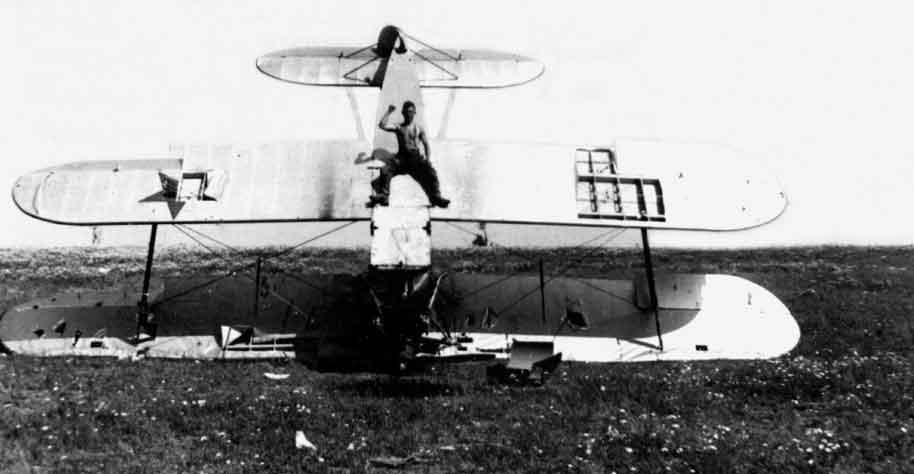
This German soldier is sitting on a U-2 or R-5 light reconnaissance bomber. Up to 20,000 U-2s were built for the Red Air Force and the aircraft saw combat throughout the war in a variety of guises.
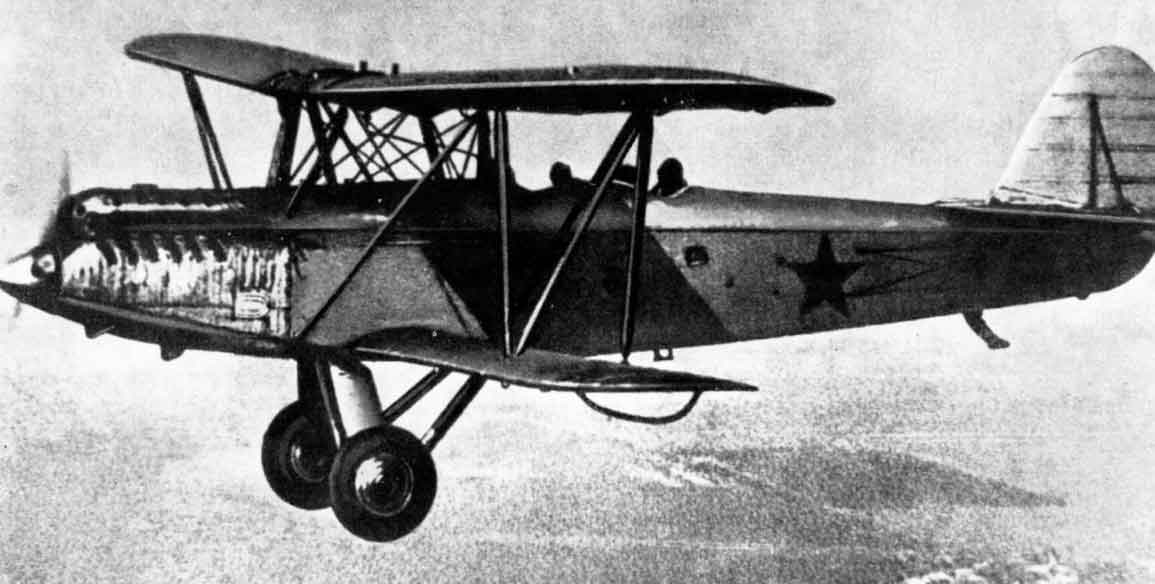
The Soviet R-5 first went into service in 1930 and by the time it had been phased out fourteen years later, about 7,000 had been built.
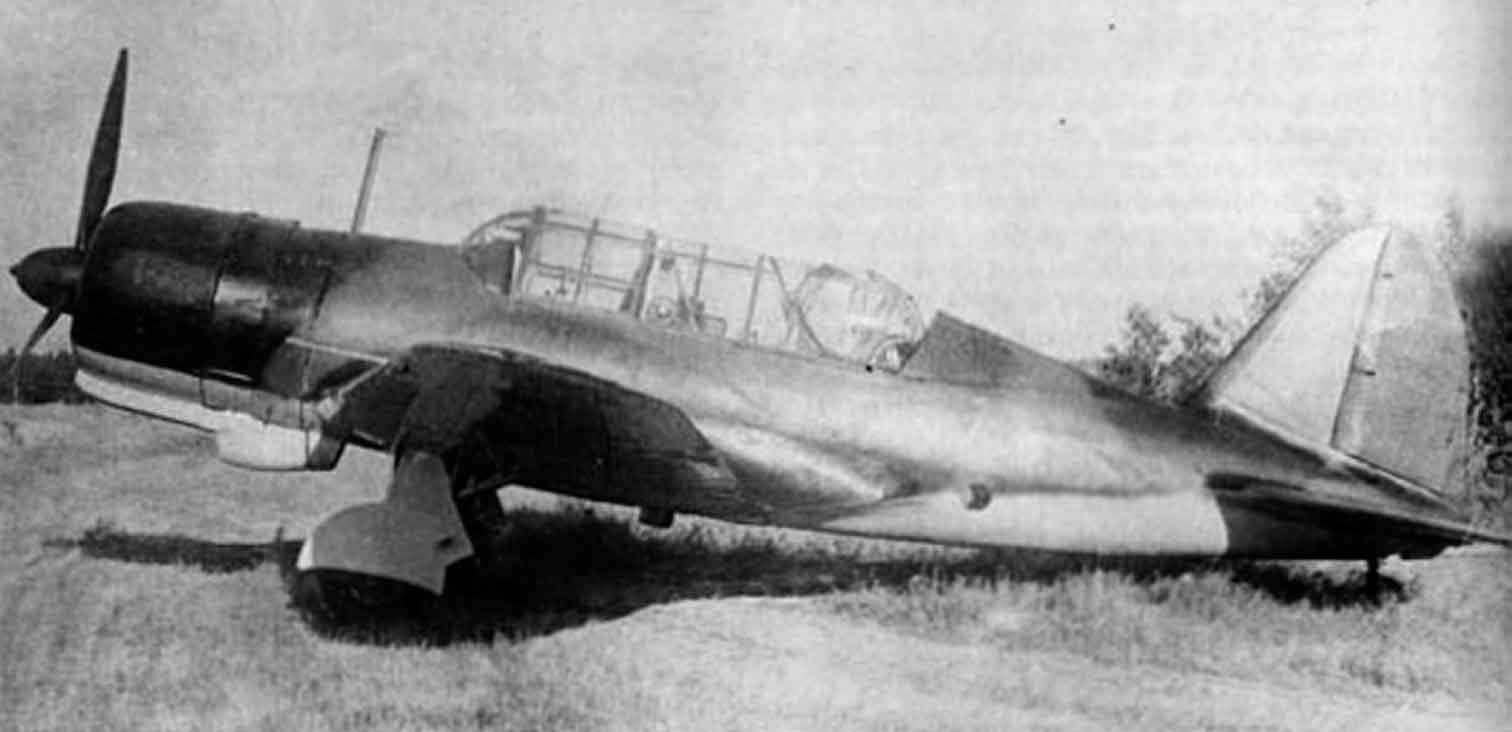
The BB-1 Blizhniy Bombardirovschik, or short-range bomber, was renamed the Su-2 in 1940. Production was disrupted by the German invasion and the aircraft proved to be vulnerable to enemy fighters.
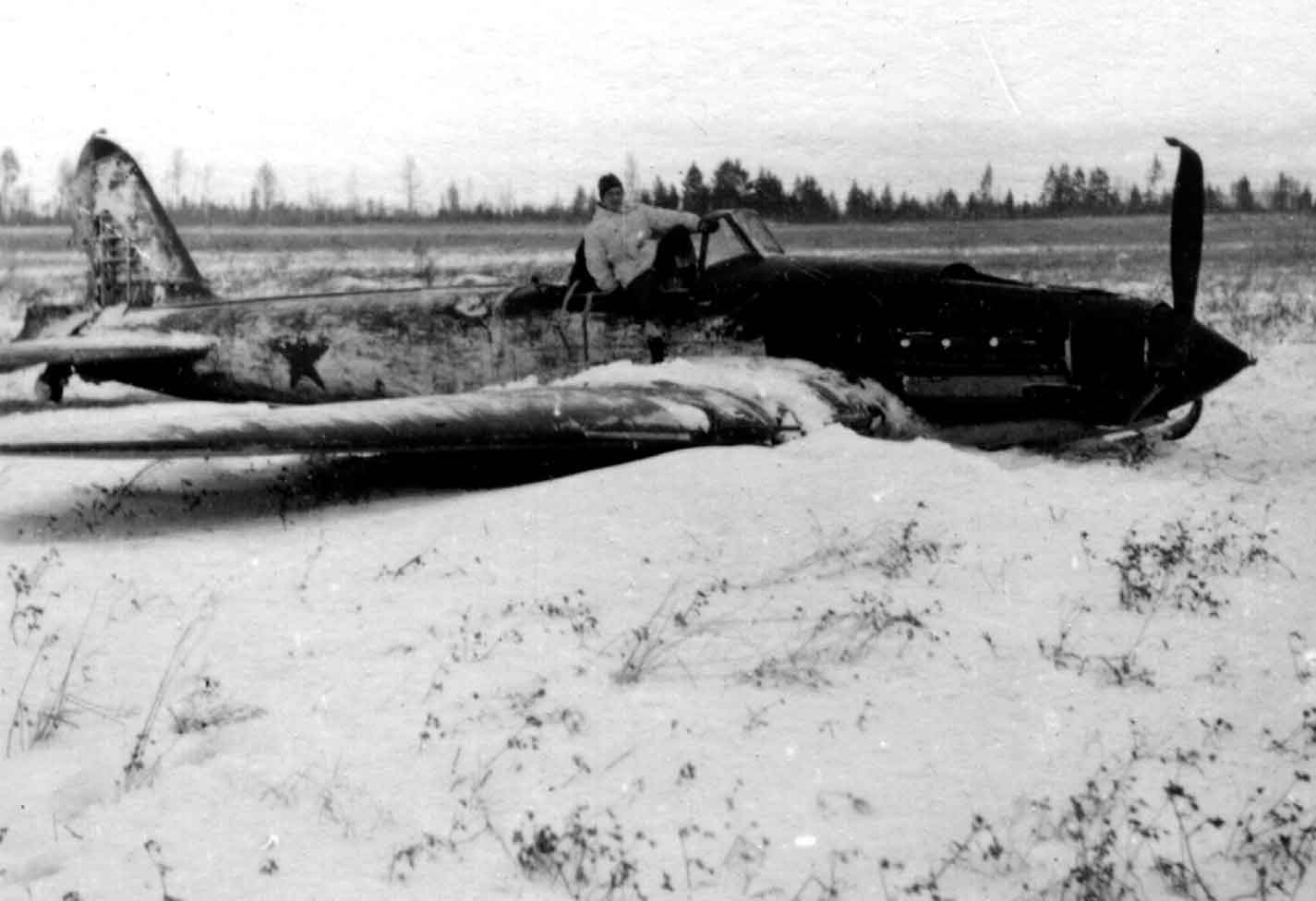
[Top, Above] Two views of the initial single-seat Il-2 Shturmovik, or ground-attack, aircraft, which was armed with 20mm or 23mm cannon depending on which factory produced it. Due to the shortage of fighters in 1941–42, the Il-2 was sometimes used as a fighter, but it was outclassed by the Bf 109 and the Fw 190 with predictable results. However, the Il-2’s firepower proved quite effective against the German Hs 126, Ju-87 and Ju-52.
The Il-2M with a rear gunner entered service in September 1942 and the remaining single-seat versions were converted to this configuration. The Il-2m3 with the NS-37 37mm cannon seen here appeared the following year featuring swept-back arrow wings. The Red Army called it the ‘Hunchback’ and the ‘Flying Tank’ and it proved deadly against German armour.
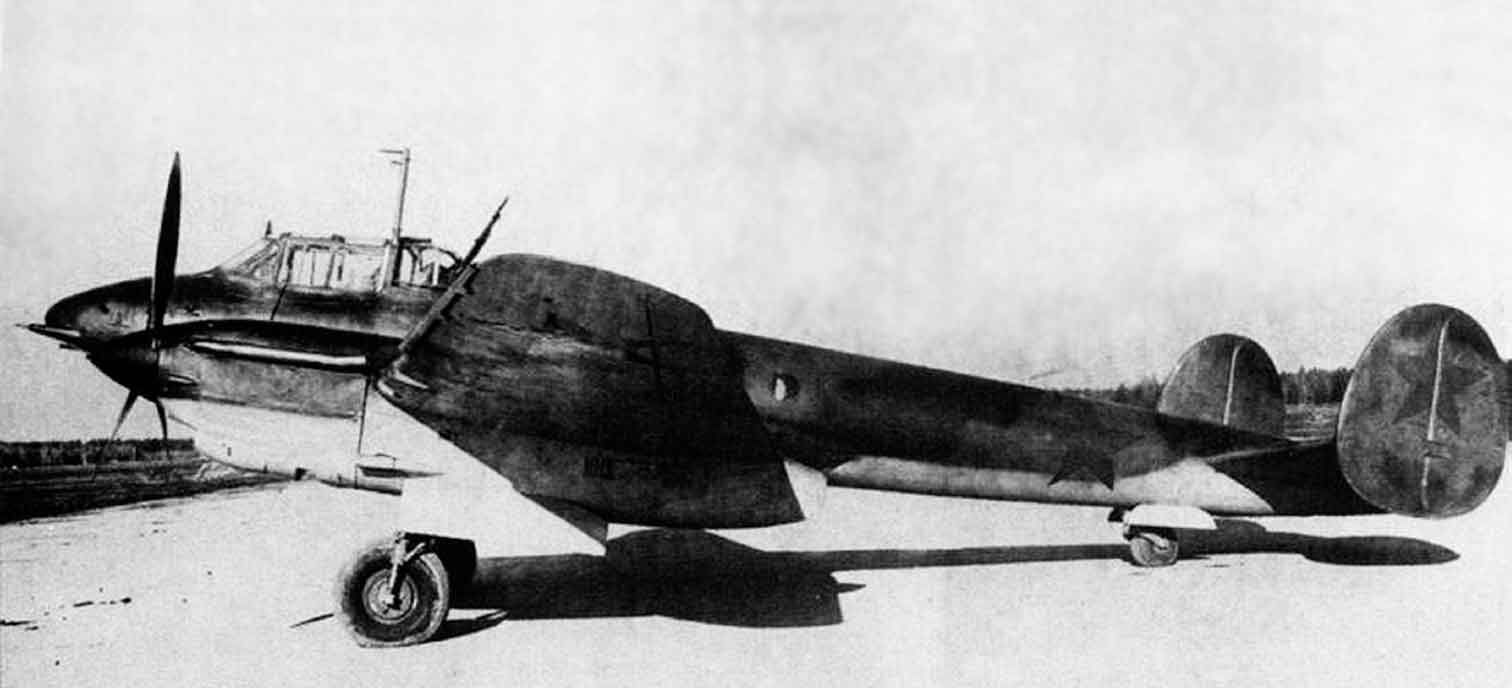
The Petlyakov Pe-2 dive-bomber, nicknamed Peshka (pawn, i.e. ‘little Pe’) went into production in February 1941. The version pictured here is the Pe-3, which was a night fighter variant. The Pe-2 proved to be a highly capable aircraft that could escape the Luftwaffe’s interceptors and was able to take on the Bf 109.
The burnt remains of a Pe-2 shot from the skies by the Luftwaffe. German pilots soon discovered the aircraft’s weakness lay with the ventral gun, which had limited angles of fire and tended to jam. Also, the rear gunner was poorly protected, leaving him vulnerable to enemy fire.
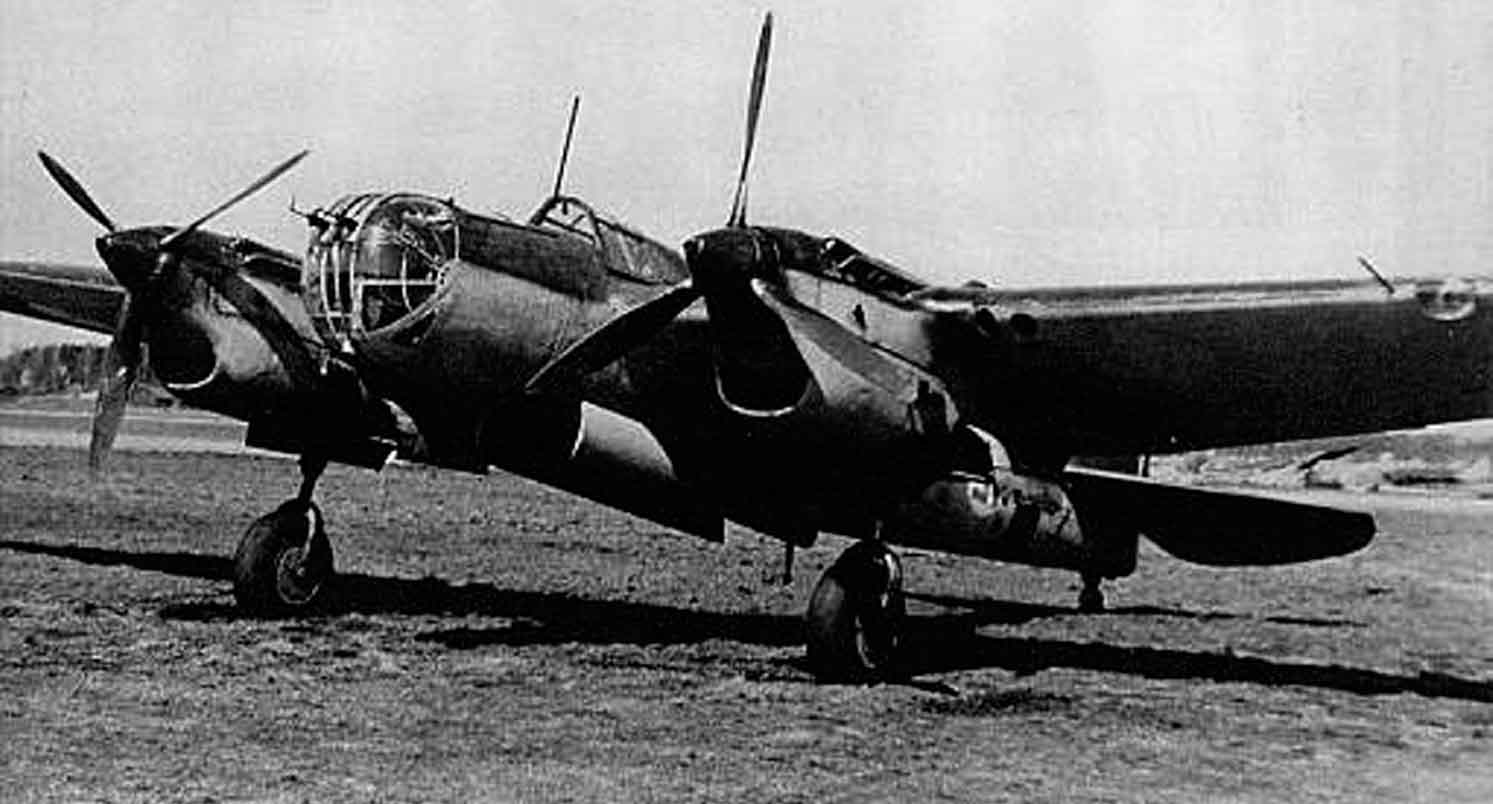
The Tupolev SB twin-engine light bomber went into production in the mid-1930s, and 6,967 had been built by 1941. It proved vulnerable making daylight raids so was switched to night bombing.
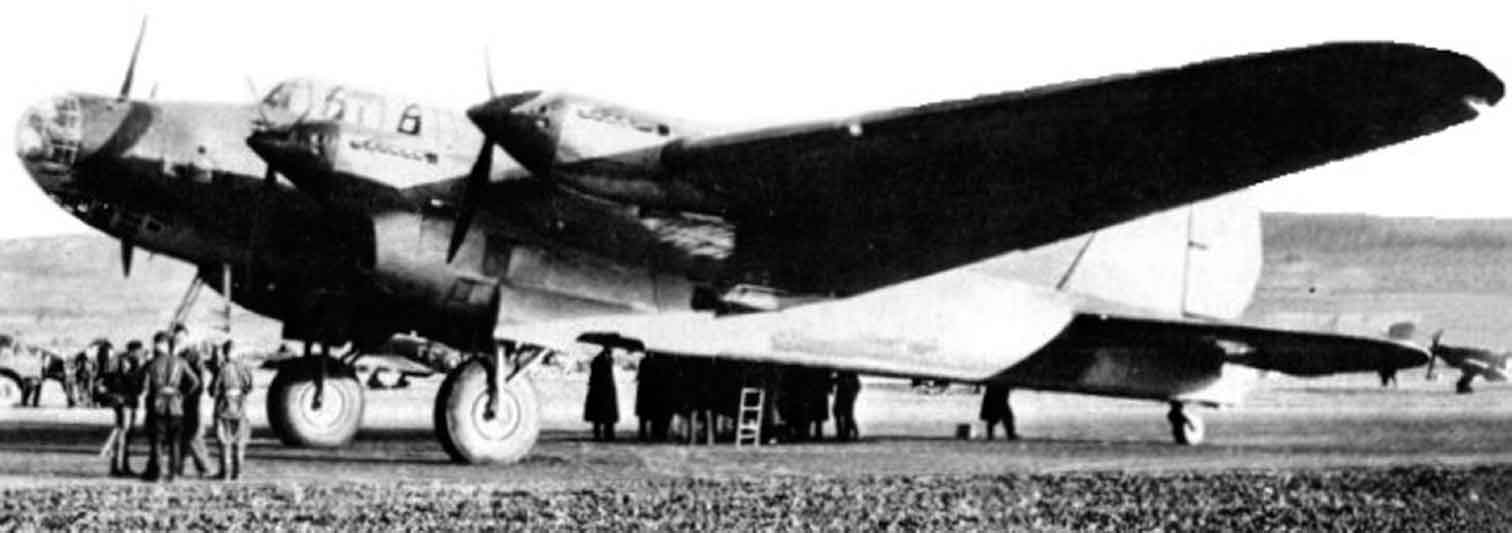
The Pe-8 was the only four-engine Soviet strategic bomber to see service during the war but a mere seventy-nine were ever built. Just before Operation Barbarossa only the 2nd Squadron, 14th Heavy Bomber Regiment was equipped with the Pe-8 and it was not combat ready.
The TB-3 bomber, introduced in 1932 having seen action over Mongolia and Finland, was officially withdrawn from service in 1939. Nonetheless, the Red Air Force had 516 and the navy another twenty-five aircraft, and by the summer of 1941 it made up 25 per cent of the Soviet bomber force.
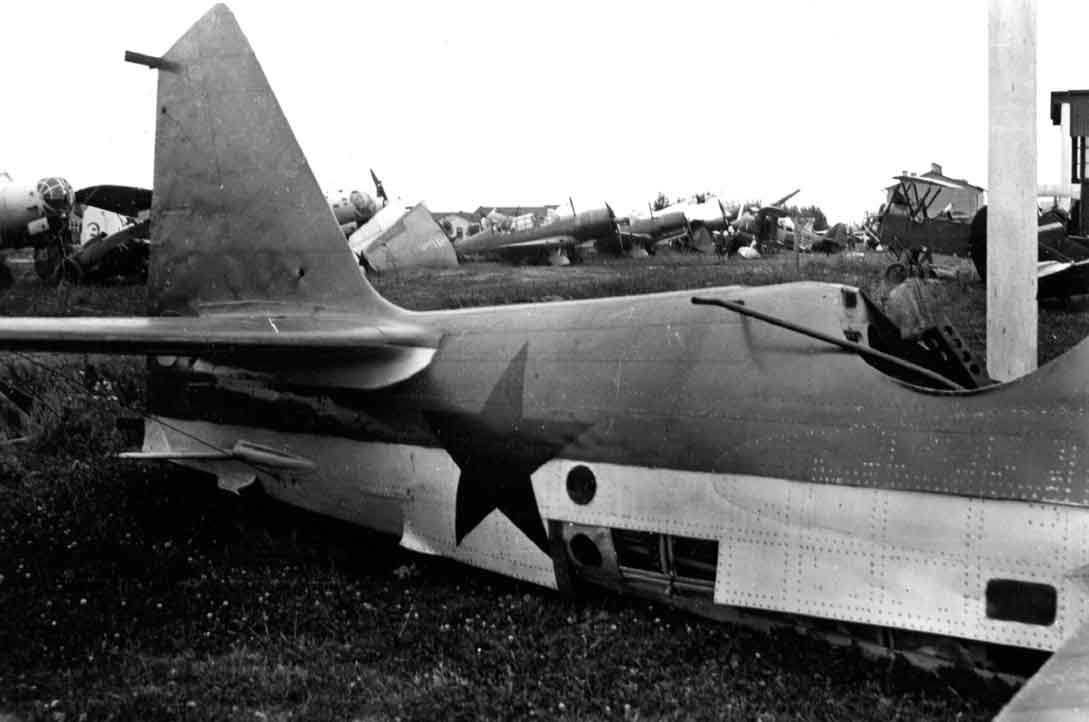
This captured Soviet airfield contains a wide variety of aircraft types, which, left to right, includes SB-2 light bombers, Su-2 short-range bombers, an I-15 trainer and a U-2 reconnaissance aircraft.
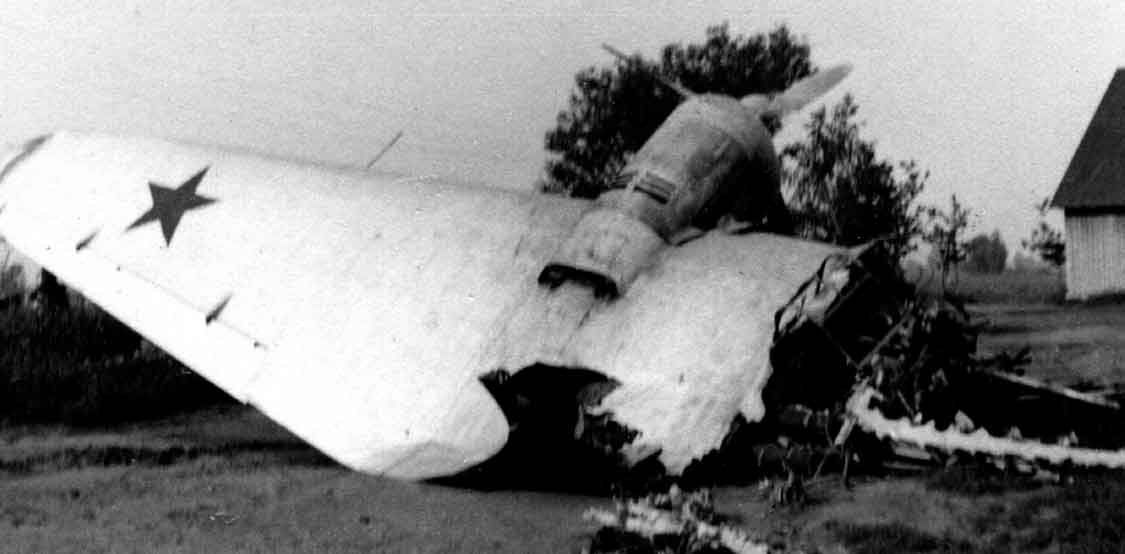
The smashed remains of an Ilyuhsin, or Tupolev, twin-engine bomber.
